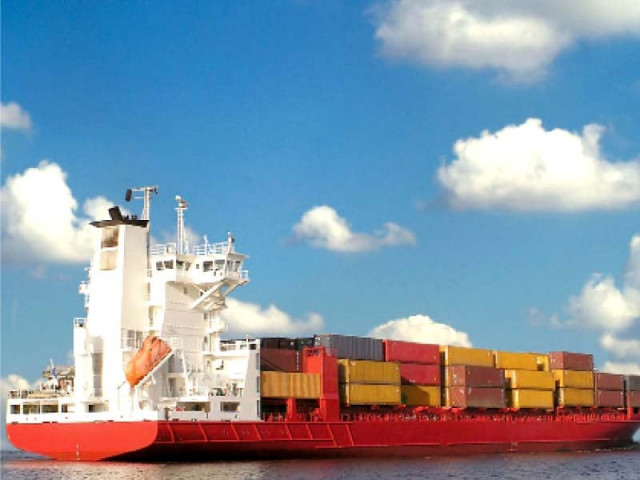Ministry stresses on production led growth
Budget deficit soars to Rs700 billion in July-August FY22

Amid deterioration in external sector, the federal budget deficit widened to 1.3% of size of economy or around Rs700 billion in just two months of this fiscal year, making a strong case to reset policies for sustainable growth.
The provisionally estimated federal budget deficit of 1.3% of the Gross Domestic Product (GDP) during July-August period of the current fiscal year was significantly higher than the same period of the last fiscal year, according to the government sources. The finance ministry has set the annual deficit target at 6.3% of GDP.
Sources said that the deficit number might marginally reduce to around Rs650 billion or 1.2% of GDP after reconciliation of the financing and expenditures data. From the financing side, the deficit is around Rs650 billion.
Minister for Planning and Development Asad Umar also made a presentation to the federal cabinet on Tuesday, which suggested deterioration in both fiscal and external indicators.
Information Minister Fawad Chaudry in his regular cabinet meeting briefing to the media shared rosy indicators like increase in foreign remittances, foreign exchange reserves and revenue growth, skipping other crucial fiscal indicators.
The Ministry of Finance did not reply to a question on the reasons behind 1.3% of GDP budget deficit in two months.
Sources said that higher debt servicing was one of the reasons behind widening of the deficit.
Unlike an impression given in the Monetary Policy Statement about increasing development spending, the development expenditure was estimated at Rs52 billion in July-August period, the sources said. It was slightly lower than the same period of the last fiscal year.
After calculating the provincial cash surplus of about 0.4% of GDP or nearly Rs200 billion, the overall budget deficit is around 0.9% of GDP for two months, they added.
Sources said that the government was discussing whether it needed a sustainable economy before entering into elections or an economy having high economic growth rate but is highly unsustainable. The indicators pointed that higher growth rate was not attainable without disturbing economic stability due to non-resolution of underlying problems in the past three years.
A shift in policies came in April this year after departure of Hafeez Shaikh who was advocating low but sustainable growth rate. Finance Minister Tarin was in favour of having over 6% growth rate in the remainder period of the Pakistan Tehreek-e-Insaf (PTI) government.
A finance ministry report on the state of economy, released on Tuesday, also emphasised having “sustainable growth”, based on domestic production rather than consumption.
The central bank has already increased the interest rates with a possibility of further increasing rates soon. The State Bank of Pakistan (SBP) has also curtailed consumer financing by amending the prudential regulations.
READ Current account deficit widens to $1.5b
Tarin has said that the government would introduce regulatory duties to curb imports.
The cabinet has been informed that there is an almost four-time increase in the current account deficit that widened to $2.3 billion during July-August period of this fiscal year on back of massive surge in imports. Exports and foreign direct investment were not enough to finance these imports, majority of these consumable goods.
During the first two months of this fiscal year, the total imports surged to $12.2 billion and the share of productive sector imports was hardly one-fourth. The food items imports amounted to $1.5 billion or nearly one-tenth of the total imports.
The consumer goods imports also increased to $860 million or nearly 7% of the import bill. The imports of petroleum products increased to $3.1 billion, which were double than the comparative period and constituted 30% of the total imports.
The share of textile and machinery group was only 15%, including import of raw cotton.
But major increase in the import bills was because of increase in prices instead of increase in quantity, suggesting that the imports were not increasing because of increase in real economy.
Sources said that these numbers do not present a good base for starting policy level talks with the International Monetary Fund (IMF) from next week. Pakistani side will be exposed to pressure by the IMF to take fiscal and monetary consolidation measures for revival of the stalled programme, they added.
The information minister said that Pakistan’s economy was growing well, particularly the agriculture sector. He said that the growth momentum of industries and services sector was also good.
However, there was nearly one-third reduction in credit to the private sector during the first two months of this fiscal year, mainly because of decrease in working capital requirements. The fixed investment related loans increased by 40% to Rs41 billion.
Finance ministry economic outlook
“Pakistan’s economy is currently on a higher growth path and for long-term enhancement and sustainability of economic growth, it is important that it is driven by the expansion of domestic production,” according to the Economic Advisor Wing report.
The report stated attaining sustainable higher growth path requires a much larger proportion of the value added to be directed towards gross fixed capital formation, instead of consumption.
The finance ministry said that in the short term, sustainability of the current growth requires that the trade deficit remains manageable. The finance ministry predicted inflation rate is expected to decline.
It also said that by maintaining Real Effective Exchange Rate (REER) at current level, the need for depreciation of the rupee exchange rate is reduced significantly. The government policies for export promotion will also anchor for providing external sector stability, it added.
The year on-year inflation in September is likely to resume its declining trend and is expected to end up in between 7.5% to 8.4%, said the ministry.
But it said that risks that could raise inflation include higher trend in global commodity prices, especially food and energy items.
Published in The Express Tribune, September 29th, 2021.
Like Business on Facebook, follow @TribuneBiz on Twitter to stay informed and join in the conversation.



















COMMENTS
Comments are moderated and generally will be posted if they are on-topic and not abusive.
For more information, please see our Comments FAQ